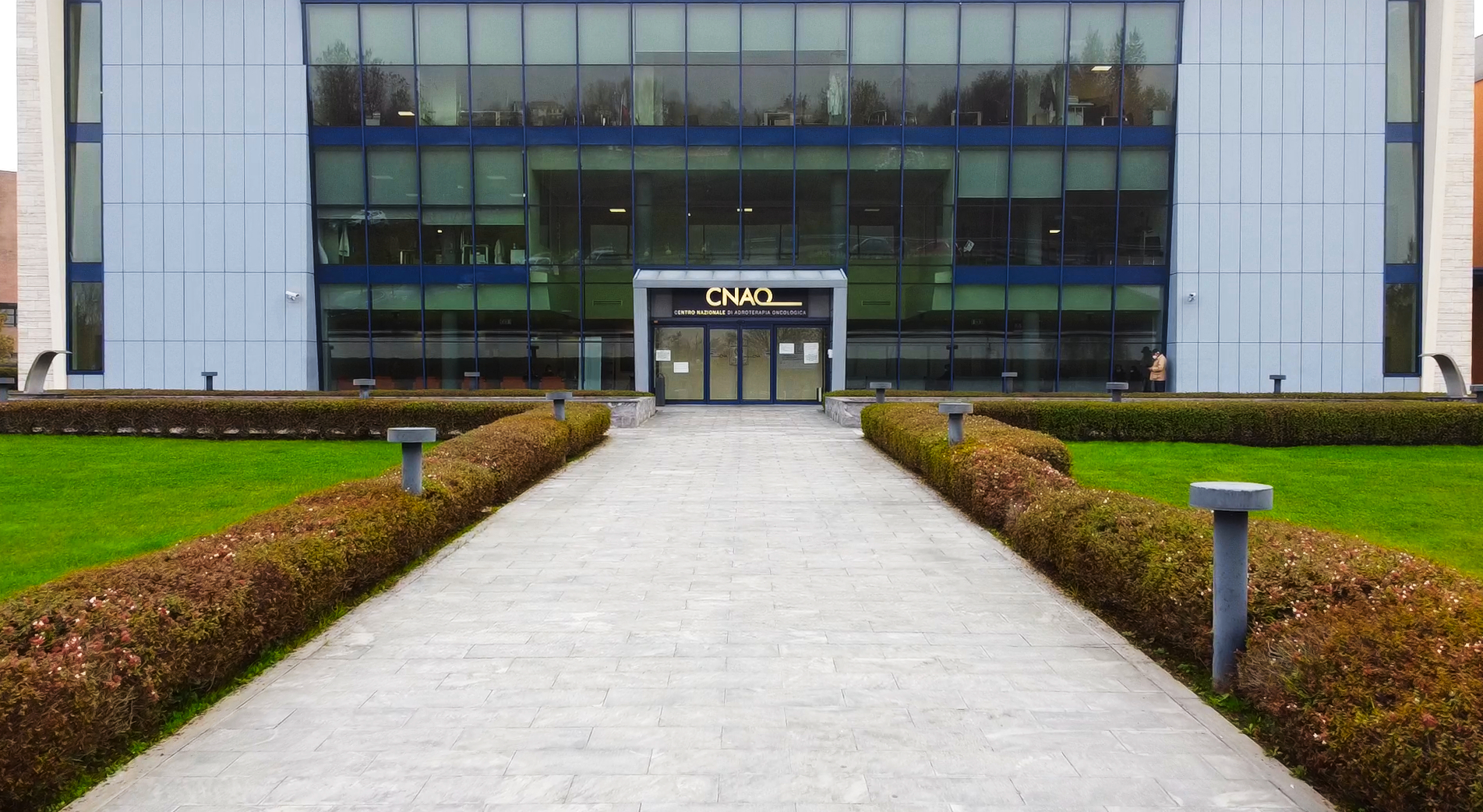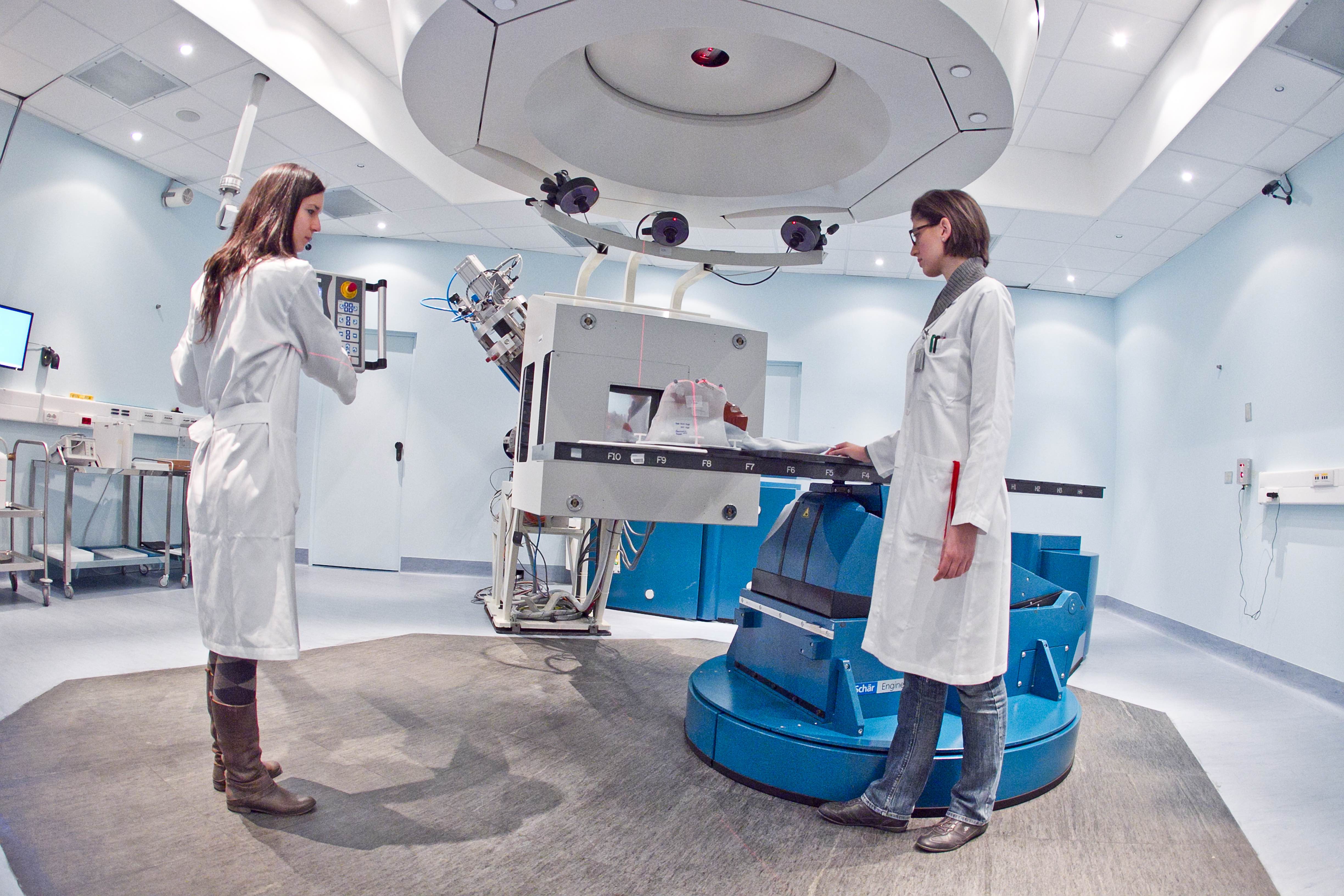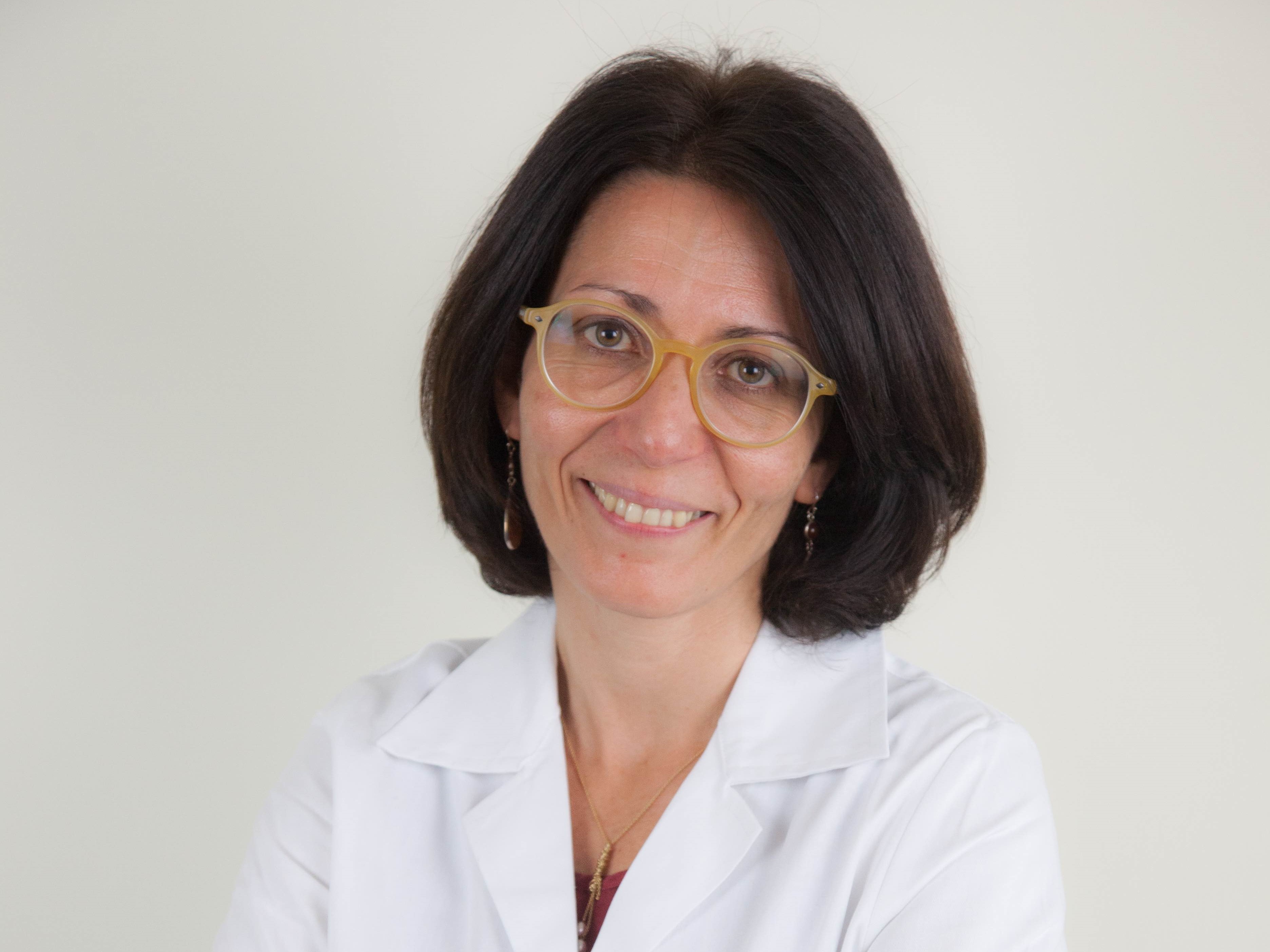CNAO Pavia: An Oncological Hadron Therapy Centre
How does hadron therapy work? Which tumours can be treated with it? For how long does an hadron therapy session last? Our questions are answered by Dr Viviana Vitolo, a physician based at CNAO.
Interview with Dr. Viviana Vitolo
Article translated from the original Italian version
esanum: Which conditions have the potential to be treated with hadron therapy?
Hadron therapy is used in a number of different cases:
- in tumours that are histologically unresponsive to conventional radiotherapy (e.g. sarcomas, adenoid-cystic carcinomas of the salivary glands, ocular melanomas, relapses in areas already irradiated);
- in tumours near major radiation-sensitive organs, such intracranial meningiomas adjacent to the optic nerves and/or the brainstem;
- in tumours that cannot be surgically removed due to the high degree of destruction.
esanum: In terms of the effectiveness of hadron therapy, can it be attributed more to the specific benefits of the treatment itself, or rather to the protection of the surrounding healthy tissue?
The advantages of hadron therapy in particular when used with carbon ions are based on the radiobiological properties of the particles. Due to their charge and mass, they have two to four times more destructive power in the affected tumour cells than X-rays. The spatial selectivity of both protons and carbon ions is also a distinctive feature of hadron therapy. It allows the dose delivered to the target location to be increased while also sparing the surrounding healthy tissue. There is a direct correlation between the higher dose delivered to the tumour (dose escalation) and the expected potential cell damage.
esanum: Is this treatment considered a first choice?
As with conventional radiotherapy, hadron therapy complements other cancer therapies as part of a multidisciplinary treatment approach. It is not generally the first choice of therapy.
esanum: Which are the most common types of cancer treated at the CNAO so far?
Tumours involving the head and neck (salivary glands, sarcomas), the spine and the chest and abdomen (sarcomas), as well as neuro-oncological diseases (intracranial meningiomas and chordomas) and ocular melanomas.
esanum: How many patients have been treated since the CNAO started its operation? And who are the typical patients?
We have treated more than 3,700 patients, including more than 2,000 men and more than 1,600 women. All age groups are represented, with most patients being between 40 and 80 years old. Most of them come from Italy.
esanum: How do patients get treatment from you?
A multidisciplinary panel of the referring cancer centre, with which the CNAO collaborates, discusses a case before referring the patient to us. Often, colleagues from other institutions will send in their cases with a request for assessment for therapy by directly contacting the attending physicians at the respective pathology department. Also, some patients send their records to the centre themselves. As oncology networks are created, this will be less the case in the future.
esanum: Are there exclusion criteria independent of the clinical picture?
There are no definite exclusion criteria from treatment with hadron therapy. As with conventional radiotherapy, it is essential that the patient cooperates and is prepared to remain still on the treatment couch.
esanum: Can you describe the treatment process?
The therapy session lasts an average of 20 to 25 minutes. This includes the pre-treatment checks, i.e. the radiological measuring process (two-dimensional or volumetric), which ensures that the patient's position corresponds to the one on the day of the CT simulation. Then the beam is delivered. This varies in duration depending on the number of areas to be treated (usually two or three), the type of target (static or moving) and the size of the target.
esanum: Where does the CNAO fit into the "European Network of Cancer Research"?
We collaborate with a number of European research centres. For example, CNAO is the leading partner in the HITRIPlus project (Heavy Ion Therapy Research Integration Plus), which connects 22 universities and research centres from 14 countries with the aim of advancing research on the uses of carbon ions.
CNAO also recently joined Euracan (European Rare Adult Cancers Network), a network funded by the European Union and linking 75 highly specialised cancer centres in 24 countries dedicated to improve diagnostics, treatment and research of rare adult cancers. The focus is on the care and support of those affected.
esanum: What are the current studies and what are the prospects for the future?
With its advanced therapy, the CNAO is in principle a centre where research comes first. The most important ongoing studies include:
- SACRO: A randomised observational study comparing radical carbon ion radiotherapy to surgical removal of chordoma of the sacrum;
- PIOPPO: Phase II study on chemotherapy with subsequent pre-surgical carbon ion radiotherapy in pancreatic cancer of limited resectability;
- CYCLE: Phase II study on high-dose carbon ions in patients with inoperable mucosal melanomas in the lower female genital tract;
- CYCLOPS: Phase II study on re-irradiation with carbon ions of previously irradiated gynaecological tumours in patients with recurrences in the lateral pelvic region.


